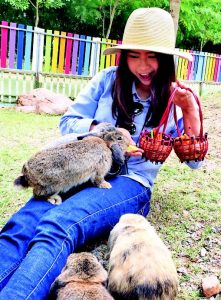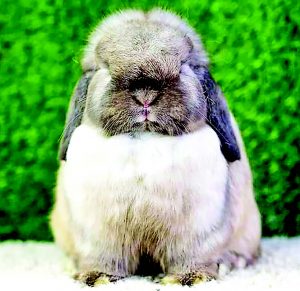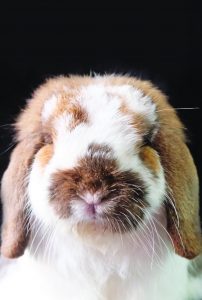Domestic rabbits (Latin name: Oryctolagus cuniculus), can be very rewarding companion animals. Most of the various rabbit breeds come in minute sizes and they can live eight to twelve years, while some manage to survive even longer. This makes them ideal as long-term furry friends to keep by our side.

Do not be deceived by their cuteness and very shy demeanor because they are very sociable creatures and must not be left on their own. Rabbits are better off in pairs or groups, unless advised in special cases by your veterinarian.
Solo Species
If you already have an animal companion, you might want to consider how you would integrate a new bunny into the household. Do you want to socialize them, or do you plan on having separate quarters for them?
Keep in mind that rabbits are often not mixed with other animals. However, it is possible to socialize them with other species if they are introduced carefully at an early stage in their lives. This allows them to easily develop friendships with each other.
Recluse Rabbits
Having a hard time finding your bunny friend? As prey animals, rabbits have the tendency to hide and escape when they feel ill at ease with their surroundings.
It is advisable to provide them access to an area big enough for their daily activities, such as jumping, playing, and running around. Once comfortable, rabbits can be very sociable animals and enjoy playing and interacting with other rabbits and, if you’re lucky, even you!
Food-Fermenting Frenzy

According to the 2014 BSAVA Manual of Rabbit Medicine by Anna Meredith and Bridgette Lord, understanding the unique physiology and anatomy of the rabbits’ gastrointestinal tract is vital to appreciate their nutritional and feeding requirements. They are hindgut fermenters and are thus adapted to a high-fiber diet consisting mainly of grass.
Feeding them correctly and carefully watching their diet will ensure proper health for your beloved fluffy friends. Consult your local veterinarian to find out what feeding practices are best for your rabbits!
Is the Holland Lop for You?
Bringing home the newest member of the family can be really exciting, but how do you choose the best rabbit who would thrive given your unique lifestyle? With 49 American Rabbits Breeders Association (ARBA) recognized breeds plus various mixed breeds around, it can seem overwhelming.
Let’s look at the characteristics, traits, and lifestyle requirements of each rabbit breed so that you, as their future human, can give them the best life possible.
The Holland Lop is easily recognized among rabbit breeds because of their signature drooped lop ears and bulldogged face. These traits make them one of the most popular rabbit breeds in the world.
Originating from Netherlands, the Holland Lop is a compact rabbit with a rollbacked type of fur, which comes in very diverse colors. It is one of the five lopped-ear rabbit breeds and is considered the smallest among them. Like their lop-eared cousins, these bunnies are prone to ear infections, what with their ears having more folds, not to mention greater contact with the ground.
Holland Lops: Benevolent Bunnies
Holland Lops are known for their excellent temperament, being gentler and more docile in comparison to some other popular breeds. They are very intelligent and easy to litter-box train, according to a 2015 article by Kerry Greener for JustRabbits.com.
Known to thrive best in calm places with older children while a little skittish with others, Holland Lops are playful and full of energy, thus needing a lot of time to run around in open air and stay stimulated with toys, as reported by PetPlan.co.uk.
Caring Companions
Lop breeds make great companion animals and are thought to be people-oriented. Moreover, in the 2009 book Rabbits for Dummies, Connie Isbell and Audrey Pavia mentioned that lops were reported by thier humans as amusing to live with as they could grow to be affectionate and sensitive to people’s feelings.
In the next issue, we will get to know the Netherland Dwarf and proper rabbit care, so stay tuned!
This appeared in Animal Scene magazine’s September 2018 issue.







